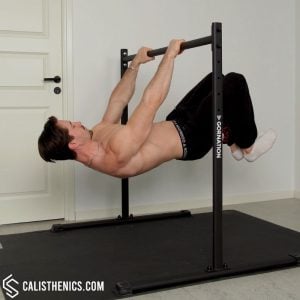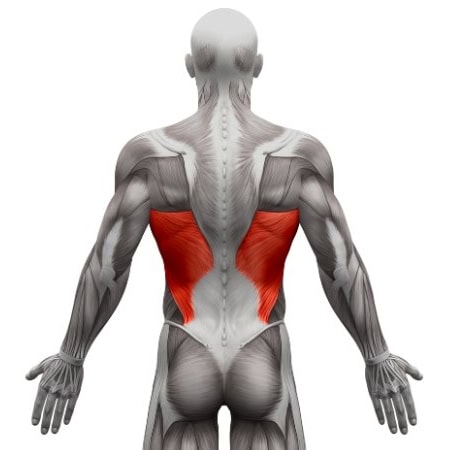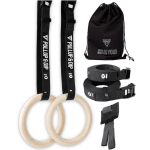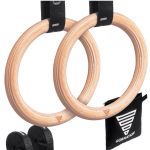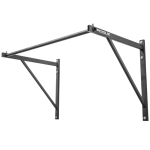Advanced Tuck Front Lever
How to do Advanced Tuck Front Lever?
The advanced tuck front lever is a progression from the tucked front lever and serves as an intermediate step toward achieving the full front lever. This exercise involves hanging from a pull-up bar while holding your body parallel to the ground with your knees bent but positioned further away from your torso than in a basic tuck. This progression increases the challenge on your core, back, and shoulder muscles by extending the leverage and requiring greater body control.
Check out our ▶️ front lever training routine to unlock the full front lever!
The equipment used is the ▶️ Static Bar from GORNATION --> For 10% off use code CS10.
CREDIT: This video was prepared in collaboration with calisthenics athlete Simon Imhäuser who was performing the exercise in the video and calisthenics coach Daniel Flefil who shot and edited the video.
Steps to Perform a Proper Advanced Tuck Front Lever:
1. Set Up on a Pull-Up Bar:
• Hang from a pull-up bar with a shoulder-width grip, using an overhand (pronated) grip.
• Fully extend your arms and engage your shoulders by pulling them down and away from your ears (scapular depression).
2. Engage Your Core and Move into a Tuck Position:
• Pull your knees toward your chest into the basic tucked position, keeping your upper body straight.
• Ensure your core and lats are engaged to stabilize your torso.
3. Transition to the Advanced Tuck:
• Gradually move your knees away from your chest, extending your hips so your thighs are parallel to the ground.
• Maintain a tight angle at the knees while keeping your shins parallel to the ground.
• Your torso and upper thighs should form a straight line, with your core and back muscles fully engaged.
4. Hold the Advanced Tuck Position:
• Keep your body still and aligned, focusing on maintaining a horizontal position with your back parallel to the ground.
• Ensure your arms remain straight and your shoulders stay depressed.
5. Lower Back to the Starting Position:
• Slowly lower your body to a hanging position with control, keeping your movements smooth and avoiding any swinging.
6. Repeat the Movement:
• Perform multiple repetitions or static holds, gradually increasing the duration of the hold as your strength improves.
Benefits of the Advanced Tuck Front Lever
• Builds Core and Back Strength: This exercise heavily engages the lats, core, and posterior chain, building strength and stability.
• Enhances Shoulder Stability: Holding the advanced tuck position requires scapular control and shoulder stability, reducing injury risk.
• Improves Body Control: The static hold enhances your ability to control your body in space, which translates to better performance in calisthenics and gymnastics.
• Progression Toward the Full Front Lever: The advanced tuck lever bridges the gap between the tucked front lever and more advanced variations, like the full front lever.
• Requires Minimal Equipment: Needs only a pull-up bar, making it an accessible exercise for home workouts or outdoor training.
• Strengthens Functional Movement Patterns: Builds functional strength that supports other pulling exercises and athletic movements.
Common Mistakes to Avoid
• Bending the Elbows: Keep your arms straight to ensure proper lat engagement and reduce strain on the biceps.
• Shrugging Shoulders: Avoid letting your shoulders rise toward your ears; maintain scapular depression for better alignment and control.
• Overarching the Lower Back: Keep your core engaged to prevent arching and maintain a neutral spine.
• Using Momentum: Avoid swinging or jerking into the position; focus on a controlled movement to engage the correct muscles.
• Holding Your Breath: Remember to breathe steadily to prevent unnecessary tension and maintain focus.
Tips for the proper execution of Advanced Tuck Front Lever
Engage the Core Fully: Keep your abs tight to maintain stability and prevent sagging in the lower back.
Maintain Scapular Depression: Keep your shoulders down and away from your ears throughout the movement.
Focus on Alignment: Ensure your back and thighs form a straight line for proper technique.
Controlled Movements: Avoid swinging or using momentum; focus on slow, controlled transitions into and out of the advanced tuck position.
Breathe Steadily: Take deep, controlled breaths to stay relaxed and maintain focus during the hold.
Muscles worked when doing Advanced Tuck Front Lever
Primary Muscles:
•Latissimus Dorsi (Lats): The main muscle group responsible for keeping the torso stable and aligned.
•Core Muscles: The rectus abdominis and obliques provide stability and control during the hold.
Secondary Muscles:
•Rhomboids and Trapezius: Help stabilize the scapulae and support the shoulders.
•Biceps: Work isometrically to stabilize the arms.
•Erector Spinae: Engage to maintain spinal alignment and resist gravitational pull.
•Glutes: Activate to support the hips and maintain a tight body position.
Primary Muscle(s):
Secondary Muscle(s):
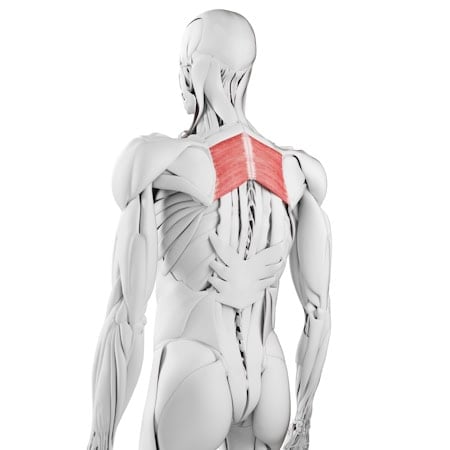
Rhomboid
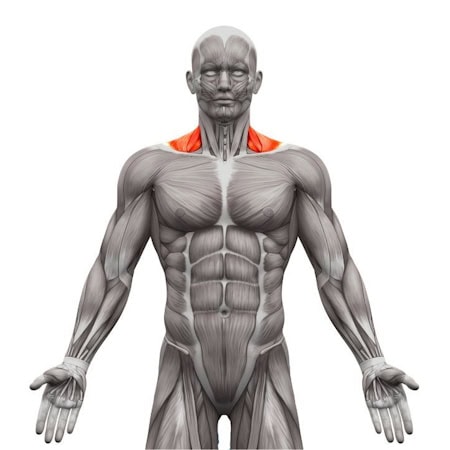
Trapezius
Adjust the difficulty of Advanced Tuck Front Lever
How to make Advanced Tuck Front Lever harder?
How to make Advanced Tuck Front Lever easier?
How to make Advanced Tuck Front Lever harder?
To make Advanced Tuck Front Lever harder:
-
Increase Hold Time: Gradually extend the duration of the hold, aiming for 10-15 seconds or longer.
-
Move Toward a Full Front Lever: Slowly extend one leg at a time to progress toward a full front lever or straddle position.
-
Perform Controlled Lowering: Transition from an advanced tuck into a controlled descent toward a full front lever position to further challenge your core and back muscles.
How to make Advanced Tuck Front Lever easier?
To make Advanced Tuck Front Lever easier:
-
Shorten the Leverage: Move your knees slightly closer to your chest to reduce the load on your core and back.
-
Use a Resistance Band: Loop a resistance band around the pull-up bar and under your hips to provide support and reduce the load.
-
Perform Dynamic Reps: Instead of holding the position, perform controlled lifts into the advanced tuck and return to the starting position.

